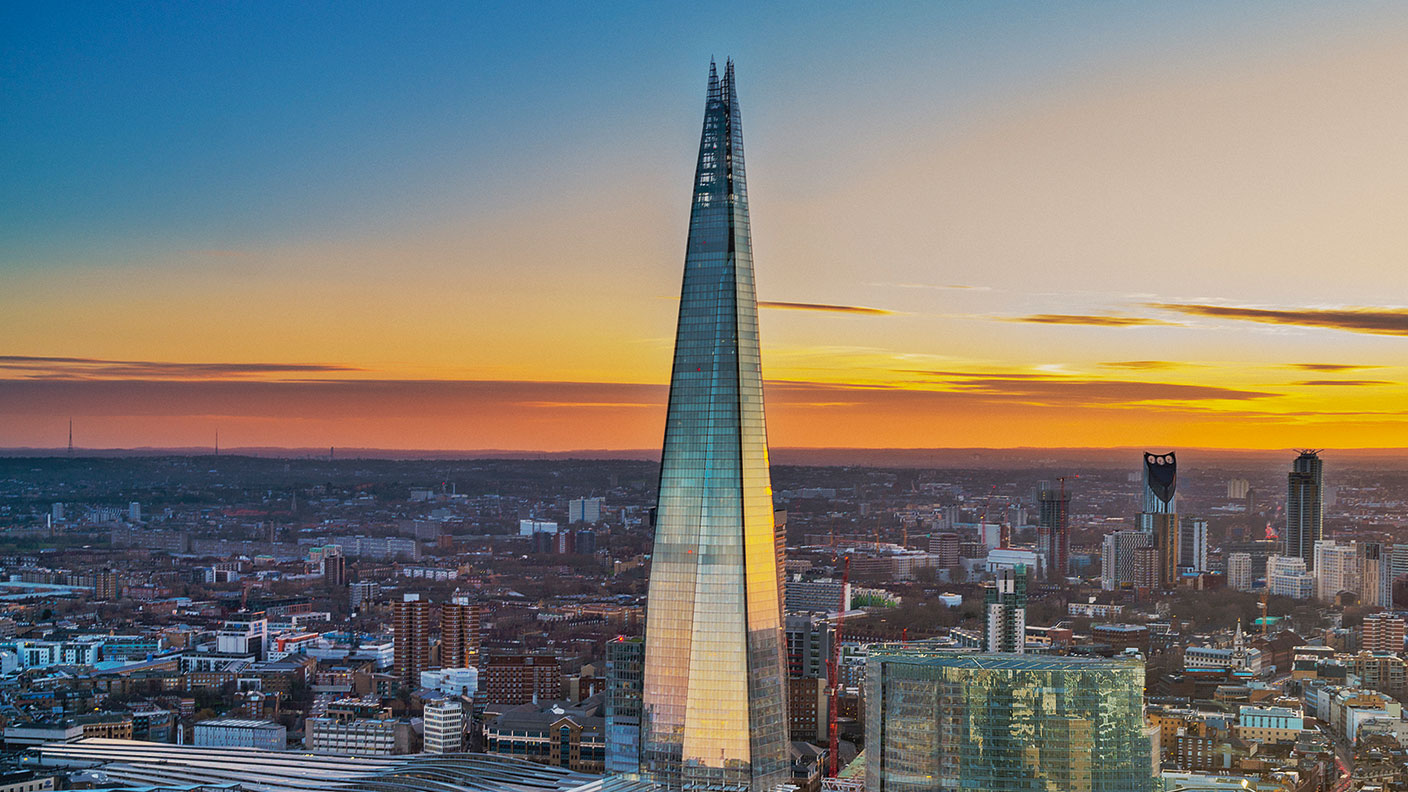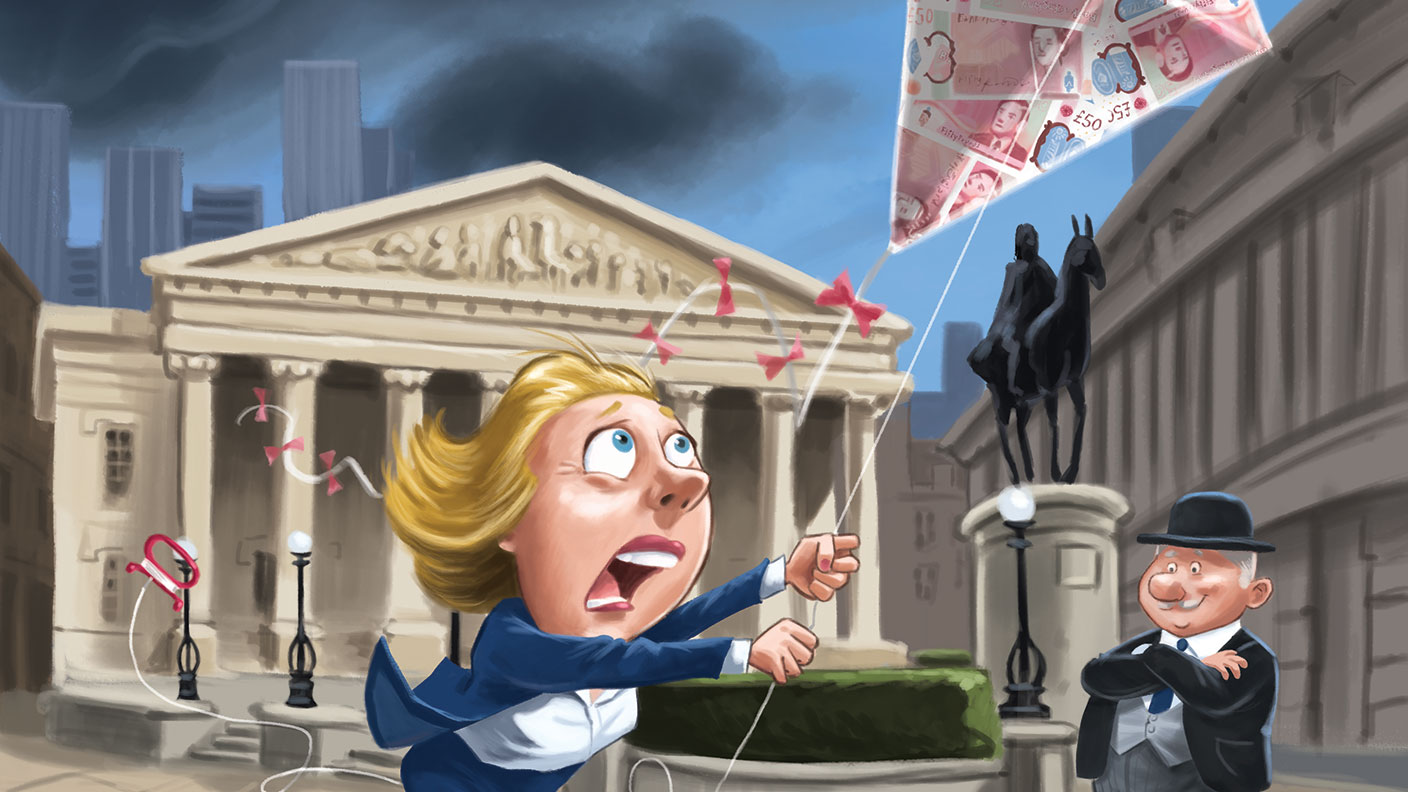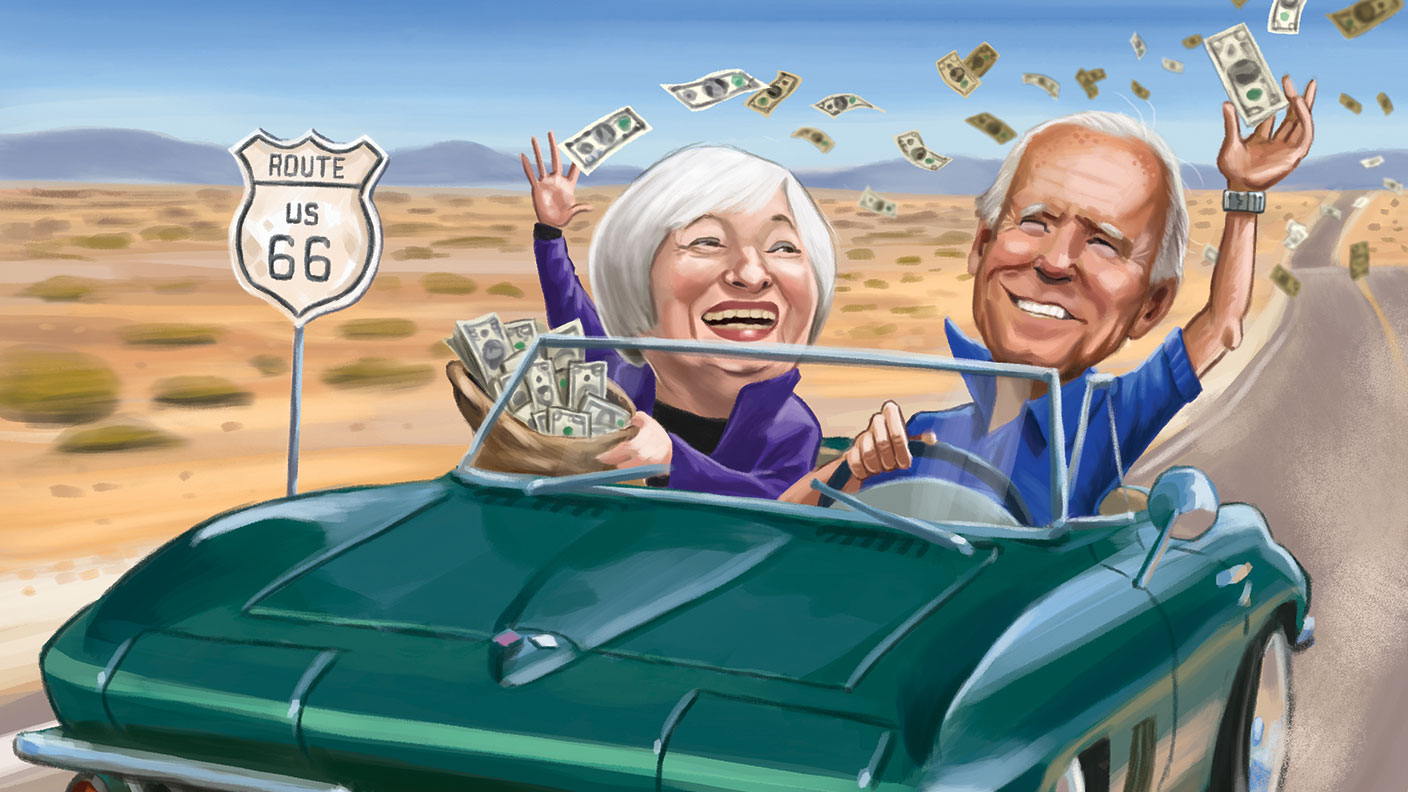Prepare your portfolio for the return of inflation
Investors have enjoyed unusually favourable markets since the global financial crisis, but inflation and interest rates are heading up. How should we protect our wealth now? Matthew Partridge reports.


Ever since the global financial crisis of 2007-2009, investors have become used to a combination of relatively low inflation and rock-bottom interest rates.
However, over the past 18 months we've moved from a situation where deflation and falling prices were considered the most pressing concern to a position where British inflation has consistently been above the Bank of England's target of 2%. Indeed, the annualised rate of change of inflation over the last three months is running at close to 3%.
The main reason inflation has picked up over the last year is the labour market. In both America and Britain unemployment levels are near historical lows at 4.1% and 4.4% respectively. Up until recently this has come at the cost of stagnant and falling wages, with wages in the UK lower than they were in 2008 after you adjust for inflation.
MoneyWeek
Subscribe to MoneyWeek today and get your first six magazine issues absolutely FREE

Sign up to Money Morning
Don't miss the latest investment and personal finances news, market analysis, plus money-saving tips with our free twice-daily newsletter
Don't miss the latest investment and personal finances news, market analysis, plus money-saving tips with our free twice-daily newsletter
However, firms are increasingly finding that there are a lack of qualified staff to fill job vacancies. "The only way for firms to solve this is to pay more money", notes Guy Stephens of Rowan Dartington, a wealth manager, and as a result "it is inevitable that wages will increase".
Rising wages "are good news for the man in the street" as well as evidence "that the gains from money printing are finally trickling down into the real economy", Stephens points out. However, in the past there has been a "strong relationship between wage hikes and subsequent inflation", especially in the United States.
British firms will also have to deal with the increase in the National Living Wage (the minimum wage for workers aged 25 and over). Consequently we are seeing the UK "experiencing real wage growth for the first time in a very long time", says Ritu Vohora of asset manager M&G Investments.
The four "inflationists"
As well as overheating labour markets there are other global inflationary pressures that have "unleashed an inflationary tide", says Peter Warburton of Economic Perspectives, a consultancy. One of these is "supply-chain pressure" where price rises in emerging markets have hit consumers in developed countries. Increases in industrial commodity prices, as well as the greater cost of food and energy, have also played their part.
He also thinks that the fiscal relaxation that has taken place in many of the world's largest economies will end up increasing inflation. In America the Congressional Budget Office predicts that, even if last year's tax cuts end up stimulating the economy, they will still expand the deficit to more than $1trn by 2020.
Not to be outdone, the governments in China, Japan and India have also launched their own package of expansionary measures. Increasingly, the "inflationists" who lead these countries Donald Trump in the US, Japan's Shinzo Abe, Xi Jinping of China and India's prime minister Narendra Modi are acting like the "four horseman of the inflation apocalypse".
While inflation of around 3% over the next few years is still the most likely outcome, it could soar much higher under certain circumstances, says Warburton: it is not far-fetched to think political change could see higher inflation. This could happen "if there are further large increases in minimum wages, beyond those already planned". Similarly, if the government puts pressure on central banks to create more money to cover deficits along the lines of the proposals for the scheme known as "people's quantitative easing (QE)" proposed by Jeremy Corbyn then this could cause "explosive inflation".
Central banks may get more hawkish
If inflation continues to rise, interest rates may well have to go up in response, not just in the UK but elsewhere too. The Bank of England finally raised rates for the first time since the crisis in November last year, albeit just to 0.5%. The US Federal Reserve has gone further US interest rates are now back up to 1.75% and is expected to announce further increases over the course of this year.
Indeed, even the perception that inflation is a worry is making central bankers around the world more hawkish. Previously they have erred on the side of caution and kept interest rates at rock-bottom levels, postponing any hint of tightening if the markets showed the slightest sign of jitters.
But in recent months this "low-inflation, low-interest-rate regime has come to an end", as central bankers take "an opportunity to put some ammo back in the gun" by raising rates, argues Thomas Becket of Psigma Investment Management. The hope is that raising rates now when conditions seem to justify it will give them scope to cut in future to deal with any slowdown.
"Thanks to inflation and the fact that the US economy is going very strongly, the Federal Reserve will definitely raise rates in June and September," says Vohora. And while the Bank of England refused to raise rates at last month's meeting, it is very likely that the fact that "refusing to raise rates at all would cause [Governor Mark Carney] to lose credibility" means that there will be some sort of rate rise over the next few months. Indeed, whatever Carney thinks, "many of his colleagues on the Monetary Policy Committee will want to raise interest rates".
We shouldn't assume that central banks have switched their stance overnight, cautions Stephens. The new Fed Chair Jerome Powell "doesn't seem to be any more hawkish than his predecessor Janet Yellen" and it is "not in anyone's interests for rates to shoot up too fast". More cynically, "the markets have been in charge for the last ten years and the Federal Reserve knows that they are very sensitive to changes in interest rates".
Still, even he believes that the Fed will increase rates again this year, and that the Bank of England will do so as well "because Mark Carney wants to be seen to be falling in behind the Fed". Such a move would also signal that "quantitative easing is a once-in-a-generation measure, not a regular policy".
Avoid bonds, cash and highly indebted companies
Yet investors "are currently being somewhat complacent about the risk of inflation", says Dan Kemp of Morningstar Investment Management, despite the possible consequences for a range of assets that have performed strongly in recent years. It seems "obvious" that bondholders will be hit if inflation starts to rise. Since most bonds pay a fixed rate of interest and repay a fixed amount of capital at maturity, which does not change in response to inflation, they are "often subject to negative sentiment as the real value of the bond declines".
Investors may also want to avoid utilities, such as electricity and water companies, says Vohora. This is because they are the most bond-like type of shares, with investors buying them primarily for their dividend yield rather than capital growth. The prices that these firms can charge for their products and services are typically capped by regulators, limiting their ability to raise rates to try to grow their dividend faster. Higher interest rates will make the yields that they offer less attractive in comparison, and so their shares are likely to fall. (They also often carry significant amounts of debt and so their interest costs will rise as rates pick up.)
Stephens agrees that investors should reduce their exposure to all fixed-income assets, including gilts (UK government bonds) and Treasuries (US government debt). However, he warns that those holding riskier debt could be hit much harder. Since the global financial crisis large institutional investors, such as pension funds and insurance companies, who are compelled by regulations to hold a certain amount of bonds in their portfolios, have tried to get around the low yields on safe bonds by moving into higher-yielding areas, such as junk bonds and the debt of emerging market countries.
As a result the spread over Treasuries (the difference between the yield on riskier bonds and that of US Treasuries) has narrowed a lot. This could change once rates start to rise, meaning that demand for lower-quality debt could suffer more than expected, even if they offer higher yields than safer bonds. If rate rises make junk bonds much less attractive to investors, then this could have big implications for a large number of firms.
The ability to borrow large amounts of money has been good news for many "living dead companies" who have otherwise been forced to undergo major restructuring, or even bankruptcy. This suggests that rate hikes are going to be bad news for both the debt and shares of companies with large liabilities relative to their assets. The most obvious examples of such firms are "the weaker players on the high street, such as Carpetright and Debenhams".
Inflation-linked bonds offer little value
During times of high inflation "many investors will immediately focus on inflation-linked bonds", says Kemp. In the US, you can buy Treasury inflation protected securities (Tips). Like normal bonds, these pay an annual coupon, which is a fixed percentage of the face value. However, the face value is linked to the consumer price index (CPI), so any increase in prices will result in a higher coupon payment and a higher principal when it finally matures.
The UK equivalent is inflation-linked gilts, which work in the same way, although they are linked to the older retail price index (RPI) measure of inflation. (In practice, the market prices these bonds to reflect the expected difference between RPI and CPI.) But while they seem an obvious play on inflation, the big problem with relying on them to protect your wealth is that they offer a low real (inflation-adjusted) return, says Stephens.
At the moment, the real yield on ten-year US Tips is around 0.75%. The situation is even worse in the UK, where inflation-linked gilts offer sharply negative yields: the ten-year inflation-linked gilt offers a real yield of -1.75%. To some extent, that reflects the difference between the old RPI measure and the newer CPI one: if RPI is significantly higher than CPI over the next ten years, you may still preserve the value of your money in real terms (assuming CPI is what you care about it is considered a more accurate measure of inflation than RPI, but not everybody would agree it reflects their cost of living).
Before the crisis, real yields on inflation-linked bonds were much higher in 2007, Tips had a real yield of above 2% and inflation-linked gilts of above 1% (based on RPI). So yields on these have come down in line with interest rates. If rates go back up again, it's likely that investors will demand higher real yields from inflation-linked bonds and so their prices may fall along with other bonds.
Buy financials, travel companies and gold miners
Investors' best option is to "look for firms with strong pricing power that can pass on higher costs to the consumer", says Vohora. These will typically tend to be in industries with high barriers to entry. She also argues that financial firms, such as banks, will tend to do better from rising yields. Real assets are another way to hedge inflation, with gold and commercial property "things to look out for".
Still, while shares "will continue to enjoy a measure of protection from rising prices, they are not completely immune from inflation", argues Warburton. If inflation gets significantly above 3% "then this could be dangerous for stocks". Similarly, "the danger with holding gold is that rising real interest rates will increase the opportunity cost of holding it". He recommends that investors consider silver instead. Another alternative is industrial metals, such as copper, nickel and aluminium, which "should benefit from strong industrial growth".
If you want to buy gold "you would be better off buying shares in mining companies", adds Becket. Not only are they "a good inflation hedge", but the fundamentals are improving with firms "finally doing the right things for shareholders" in terms of controlling costs and making sure any further investments provide value for money. Conversely, he's bearish on popular blue-chip consumer firms such as Procter & Gamble and Unilever, which may see their margins come under pressure due to rising costs.
Energy firms will benefit from rising oil prices, which are being driven by US production growing more slowly than expected, says Stephens. Finally, he suggests looking for firms that will profit from rising wages and higher disposable incomes travel firms may benefit from people taking more holidays.
Seven stocks that will bounce higher after inflation
Any rise in the price of industrial metals should benefit mining giant Rio Tinto (LSE: RIO), one of the largest producers of aluminium as well as iron ore and copper. In the longer term Rio will also reap the rewards from its large investment in automation, which should not only reduce labour costs, but also boost efficiency. The firm is trading on 13 times forecast 2019 earnings, and has a dividend yield of 5.3%.
Goldcorp (NYSE: GG), the fourth largest producer of gold in the world, trades at 18 times forward earnings. However, it hopes to boost earnings significantly via its ambitious "20/20/20" strategy that aims not only to cut costs by a fifth, but to expand production and reserves by 20% as well. As part of this it is working on expanding the use of remote drilling, which will allow mines to operate around the clock, and in environments where it would be dangerous for human workers to operate.
If rising wages lead to people taking more holidays, then Ryanair (LSE: RYA) could be in a good position to benefit. Its revenue has already grown by 65% over the past six years, while maintaining a return on invested capital of almost 16%. Its status as the lowest-cost provider in the budget airline market should also help it to continue heading off competition from both established firms and new entrants such as Lufthansa's Eurowings. Despite these strong prospects, it trades at 14 times 2019 earnings.
Wizz Air (LSE: WIZZ) also looks like it is in a good position to benefit. Currently focusing on Europe, this company launched a UK subsidiary that has taken over the slots of the now-defunct Monarch Air. Its revenue has more than doubled over the past five years, while maintaining a return on invested capital of 25%, which is higher than Ryanair, and has the second lowest cost per seat kilometre flown. It trades at 14.5 times 2019 earnings.
Royal Caribbean Cruises (NYSE: RCL) has grown consistently over the years, and its cruises are seeing record levels of bookings, thanks to strong demand from America. In the longer run it should benefit from interest from the emerging middle class in developed countries, most notably China, and the company has already announced that it will launch an additional four ships over the next decade. Despite this, it trades at only 10.5 times 2019 earnings.
Rises in interest rates, especially long-term rates, are generally good news for banks. This is because they can charge higher rates on loans without passing the full benefit on to consumers. Bank of America (NYSE: BAC) stands to benefit more than its competitors: it is highly sensitive to interest-rate changes due to its large holdings of mortgage securities. It is already seeing a significant rise in earnings, thanks to a surge in demand for loans as well as changes in the US tax laws. It trades at ten times 2019 earnings.
On this side of the Atlantic consider Barclays (LSE: BARC), which is priced at around 8.5 times forecast earnings. At the end of March it finally settled a major lawsuit from the US Department of Justice related to the sale of mortgage securities during the credit crisis for $2bn. This was a much lower cost than most experts expected and a fraction of the $13bn that JP Morgan paid.
Get the latest financial news, insights and expert analysis from our award-winning MoneyWeek team, to help you understand what really matters when it comes to your finances.

-
 Football fans issued warning over ticket scams ahead of 2026 World Cup
Football fans issued warning over ticket scams ahead of 2026 World CupSantander customers lost more to football scams in the first six months of 2025 compared to the same period in 2024, when total losses surged due to the Euros
-
 Nationwide fined £44 million over “inadequate” anti-money laundering systems
Nationwide fined £44 million over “inadequate” anti-money laundering systemsFailings in Nationwide’s financial crime processes between October 2016 to July 2021 meant one criminal was able to deposit £26 million from fraudulent Covid furlough payments in just eight days.
-
 Governments will sink in a world drowning in debt
Governments will sink in a world drowning in debtCover Story Rising interest rates and soaring inflation will leave many governments with unsustainable debts. Get set for a wave of sovereign defaults, says Jonathan Compton.
-
 Why Australia’s luck is set to run out
Why Australia’s luck is set to run outCover Story A low-quality election campaign in Australia has produced a government with no clear strategy. That’s bad news in an increasingly difficult geopolitical environment, says Philip Pilkington
-
 Why new technology is the future of the construction industry
Why new technology is the future of the construction industryCover Story The construction industry faces many challenges. New technologies from augmented reality and digitisation to exoskeletons and robotics can help solve them. Matthew Partridge reports.
-
 UBI which was once unthinkable is being rolled out around the world. What's going on?
UBI which was once unthinkable is being rolled out around the world. What's going on?Cover Story Universal basic income, the idea that everyone should be paid a liveable income by the state, no strings attached, was once for the birds. Now it seems it’s on the brink of being rolled out, says Stuart Watkins.
-
 Inflation is here to stay: it’s time to protect your portfolio
Inflation is here to stay: it’s time to protect your portfolioCover Story Unlike in 2008, widespread money printing and government spending are pushing up prices. Central banks can’t raise interest rates because the world can’t afford it, says John Stepek. Here’s what happens next
-
 Will Biden’s stimulus package fuel global inflation – and how can you protect your wealth?
Will Biden’s stimulus package fuel global inflation – and how can you protect your wealth?Cover Story Joe Biden’s latest stimulus package threatens to fuel inflation around the globe. What should investors do?
-
 What the race for the White House means for your money
What the race for the White House means for your moneyCover Story American voters are about to decide whether Donald Trump or Joe Biden will take the oath of office on 20 January. Matthew Partridge explains how various election scenarios could affect your portfolio.
-
 What’s worse: monopoly power or government intervention?
What’s worse: monopoly power or government intervention?Cover Story Politicians of all stripes increasingly agree with Karl Marx on one point – that monopolies are an inevitable consequence of free-market capitalism, and must be broken up. Are they right? Stuart Watkins isn’t so sure.